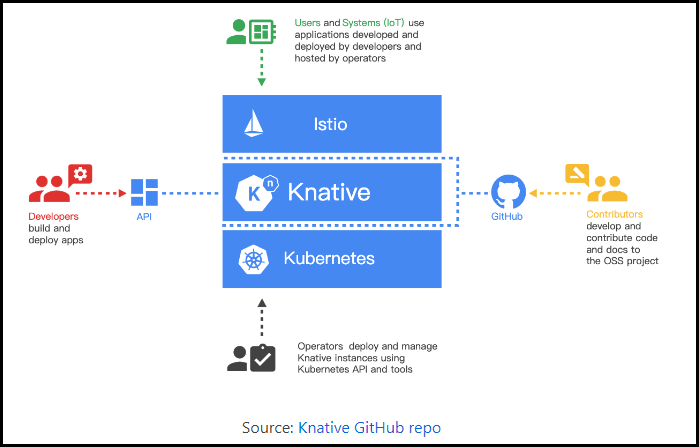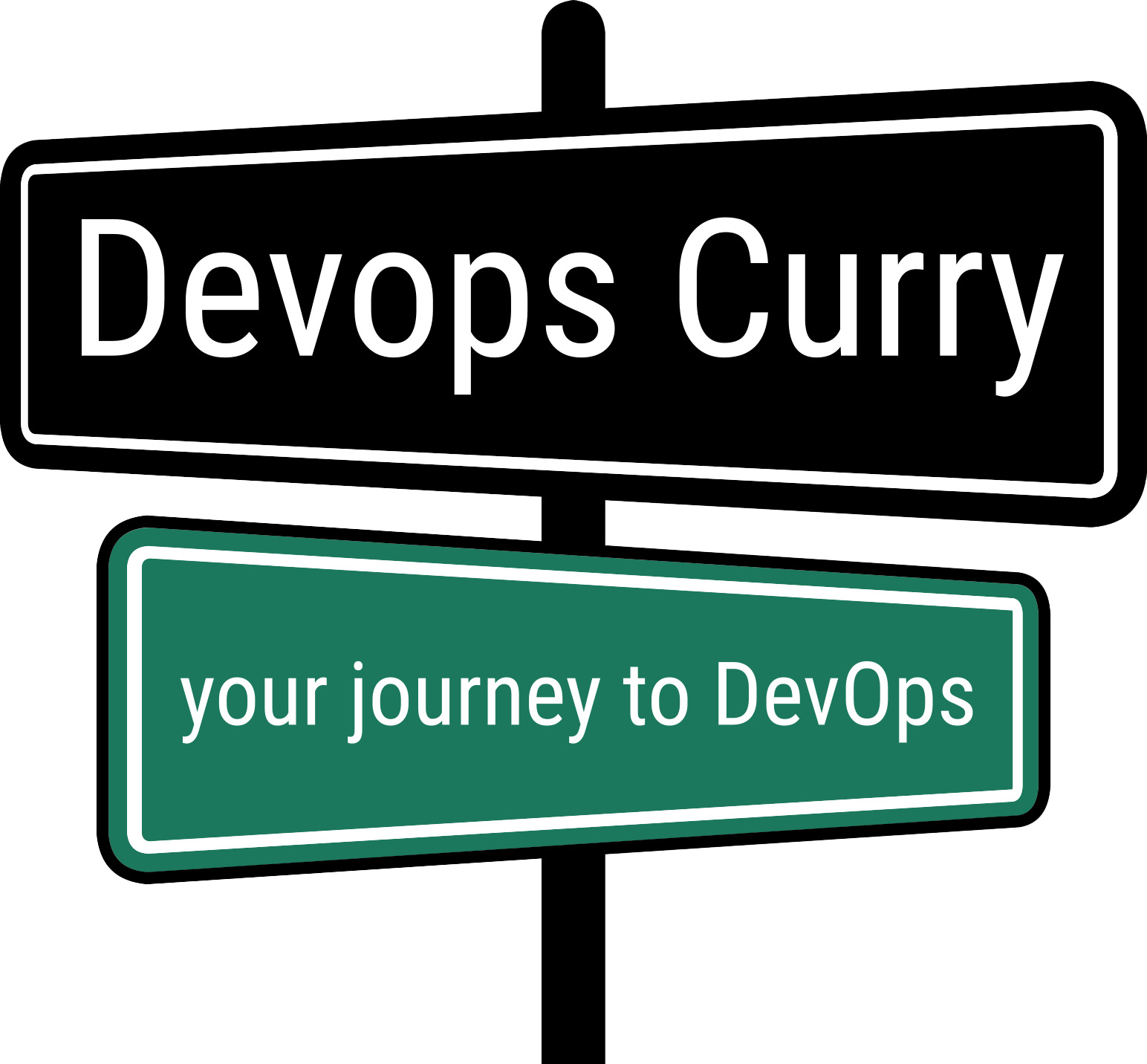
What is Knative, and why should have a look at it in 2023 !
Understanding Knative: a Container-based Serverless tool
Since last few years, serverless technologies have been in demand and also seen good adoption. Going by stats, 2021 and onwards have been predicted as years of servereless. The container based applications are the flavor of the season, and kubernetes is witnessing a huge demand and adoption from the corporates.
Kuberenetes is definitely a great tool with a lot of potential, but along with Kubernetes, the ecosystem around it is also ever-growing and expanding with lots of new tools and technologies coming into being. Once such tool is Knative, which makes Kubernetes even better.
Knative is an open-source framework launched to bridge the gap between the containerized and serverless applications among cloud providers. It was developed in 2018 and supported by a group of companies that worked together (Google, IBM, Pivotal, Red Hat, and SAP) to help Kubernetes run microservices and efficiently handle serverless applications.
Many companies widely adopt Kubernetes as an orchestration tool that manages the containers, but you have to rely on the proprietary release-management tools for deploying containers. Also, it demands writing custom code and requires manual effort for troubleshooting in case of failure, and it is challenging to implement serverless computing without the cloud-based serverless platform. Knative was introduced to overcome the situation and establish a standard for cloud-native and cloud-platform orchestration because of these problems.
You can also look at our posts on Serverless and some popular Serverless solutions.
In the post below, we will talk about Knative in detail, its benefits, why there is a need to adopt Knative, its core components, and the future of Knative for Kubernetes and cloud-based enterprises.
What is Knative?
Knative (pronounced kay-nay-tiv) is an open-source, Kubernetes-based serverless framework that was initially developed by Google. Its key feature is to maintain the standard for cross-platform orchestration, which is being implemented by integrating the container or function creation, workload management, auto-scaling, and event models.
Knative is not the only serverless platform available in the market. Earlier, we have other open-source solutions like Kubeless, Fission, Apache OpenWhisk, etc. Also, we have cloud providers that provide equivalent FaaS products like Lambda, Azure functions, function compute, and many more. Every solution mentioned above has its ways to deploy business code to a serverless platform, which may cause market fragmentation due to a lack of standardized practices. This may lead you to be bound to a specific provider for a particular feature that may not be provided by the other solution or provider. This causes problems like migration to the cloud in a serverless manner, hard to build a general-purpose PaaS platform. That is why Knative comes into play to fix these problems.
The need for Knative depends on you much you are struggling to implement the tasks that can be implemented efficiently within a Kubernetes-based pipeline. As Kubernetes has been in great demand, so has the Knative for automating the process of container-based serverless applications. Unlike other serverless environments, Knative allows you to avoid cloud vendor lock-in.
Below are some features of Knative.
- With the help of Knative, developers can directly use the Kubernetes API to deploy serverless services.
- You can easily integrate Knative within any supported environment.
- It is Kubernetes-based and allows you to deploy services to Kubernetes.
- It allows the users to trigger serverless services in Knative with the help of the eventing system.
Benefits of Knative
Knative supports Kubernetes serverless orchestration and provides services like service connection, route management, and phased release. It comes with a large community supporting it. Below are some benefits of Knative can influences business to adopt it within the Kubernetes pipeline.
- Knative is not a PaaS but is a serverless orchestration platform that allows you to create your serverless PaaS.
- It provides a CloudEvent standard framework to design serverless architecture. Unlike other FaaS solutions, it has standard events, and it is compatible with other FaaS solution.
- It comes with cross-platform support and provides a universal standard among different cloud providers that eliminate the risk of binding vendors to a specific solution.
- It has a mature and full-fledged serverless design.
- Knative helps in building a complete application from source code to images.
- It helps in supporting the proportional phased releases.
- It provides you a flexible framework without the risk of vendor lock-in for a specific solution.
- It allows you to leverage the serverless experience within a containerized environment.
- It helps in removing the reliability of customized tolling and management.
- By implementing Kubernetes, you can easily migrate to other cloud providers integrated with Knative.
- It helps in processing IoT data, running accessibility checks for your website, and validating the configuration of the security groups.
- It provides a request-driven compute model.
- It helps developers to focus on coding and allow them to create iterative code frequently. It also ensures that developers will implement new versions of the containers.
- Knative allows you to manage the workflow as a service automatically.
- Its event-based model allows you to implement designs that include registration, subscription, and connection to the external system.
Knative Architecture (Three core components of Knative)
Knative is a Kubernetes extension that allows you to build, run, and operate microservices using serverless traits. Knative is a Kubernetes-based framework to provide serverless containerization functionality. Knative has with three core components.

Image Credits:https://github.com/knative/docs/
- Building- this component helps in extending and utilizing the existing primitives of Kubernetes that enables you to run on-cluster builds of the container from the source code. It allows getting the source code from the repository and the dependencies, building container images, and registering them.
- Serving- this component is built on Kubernetes and Istio that supports the serverless application’s deployment. It also enables the rapid development of serverless containers, automatic scaling, and network programming for Istio components. It considers containers a scalable service that can range from one instance to thousand of container instances.
- Eventing- it allows you to create a communication between the loosely-coupled event producers and consumers for building an event-driven architecture. Knative places these events in a queue to be performed automatically without the developers creating a script. These events are then delivered to the containers and send feeds to the producers to perform container tasks. These events will make a connection and send the event to a specific service. This reduces the developer’s workload of creating codes to establish the connection.
Some useful Kubernetes posts for reference
- DevOps 2021: Kubernetes Cheatsheet for beginners
- DevOps 2021: Kubernetes Cheatsheet for Advanced level
- Best Open Source Monitoring options in 2021 for your Kubernetes Cluster
Conclusion: The future of Knative
Knative has changed the face of serverless computing by providing on-premise automatic scaling of event-based applications. Despite the new framework, it is making an impact on a more modular and interoperable system. It cannot be predicted that this solution will cover all the shortcomings and be the only option to run serverless architecture. But considering the benefits of Knative over other serverless alternatives make it more influential for the developers to implement it within their Kubernetes architecture.
Knative can help you save a great deal of time by eliminating the need to build and maintain your own Kubernetes extensions. Also it makes the developers’ lives easier and much better, because building custom extensions for Kubernetes is the type of task that is tedious and needs a lot of effort.
But with all that good things about Knative, you should also keep in mind that it is a relatively new tool which is still developing and evolving. So you should factor all aspects into mind and made a wise call, when adopting any new tool into your DevOps armoury.


